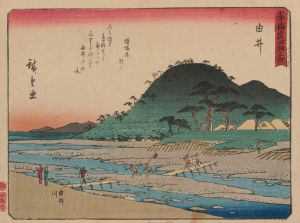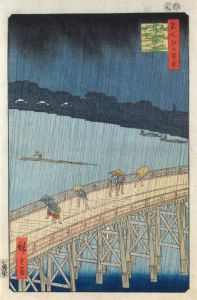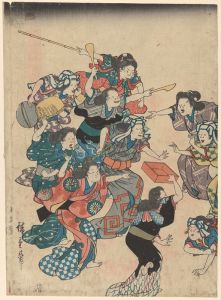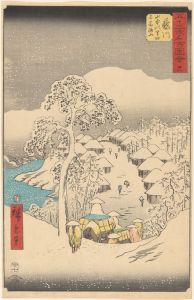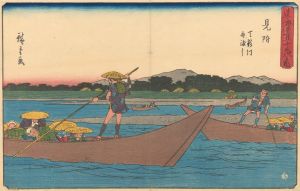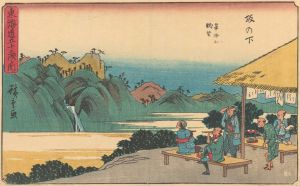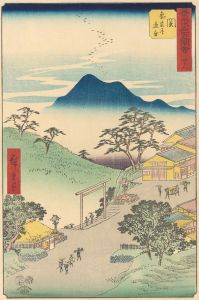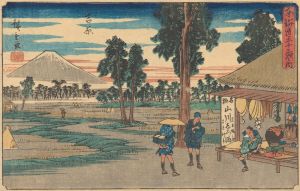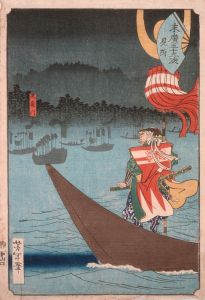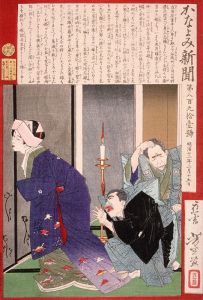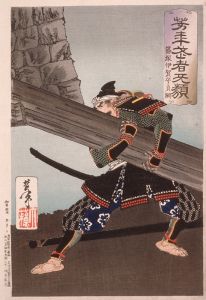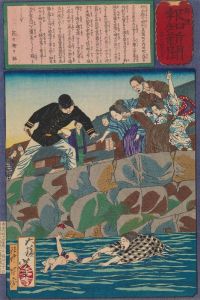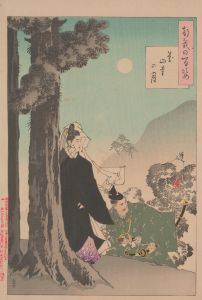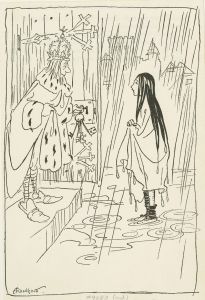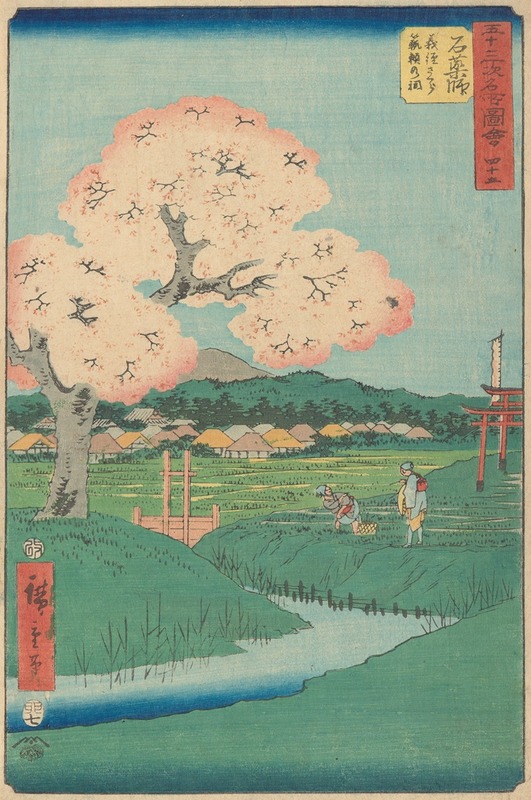
Ishiyakushi
A hand-painted replica of Andō Hiroshige’s masterpiece Ishiyakushi, meticulously crafted by professional artists to capture the true essence of the original. Each piece is created with museum-quality canvas and rare mineral pigments, carefully painted by experienced artists with delicate brushstrokes and rich, layered colors to perfectly recreate the texture of the original artwork. Unlike machine-printed reproductions, this hand-painted version brings the painting to life, infused with the artist’s emotions and skill in every stroke. Whether for personal collection or home decoration, it instantly elevates the artistic atmosphere of any space.
Andō Hiroshige, a renowned Japanese ukiyo-e artist of the Edo period, is celebrated for his landscape prints and his series "The Fifty-three Stations of the Tōkaidō." One of the prints in this series is "Ishiyakushi," which captures the essence of one of the post stations along the Tōkaidō road, a vital route connecting Edo (modern-day Tokyo) to Kyoto. This series, created after Hiroshige's journey along the Tōkaidō in 1832, is acclaimed for its innovative compositions and ability to convey the atmosphere of each location.
"Ishiyakushi" is the 45th station in the series and is located in what is now Suzuka, Mie Prefecture. The name "Ishiyakushi" is derived from a local temple, Ishiyakushi-ji, which was believed to have been founded in the 8th century. The temple was dedicated to Yakushi Nyorai, the Buddha of healing, and was a significant spiritual site for travelers seeking protection and blessings on their journey.
Hiroshige's depiction of Ishiyakushi is characteristic of his style, which often combines natural beauty with human activity. In this print, he illustrates the serene rural landscape surrounding the station, with travelers depicted in the foreground, emphasizing the constant movement and life along the Tōkaidō. The composition typically features elements such as trees, mountains, and the road itself, leading the viewer's eye through the scene and inviting them to imagine the journey.
Hiroshige's work is noted for its use of perspective and color, which were innovative at the time. His prints often employed a technique known as bokashi, a method of color gradation that adds depth and atmosphere to the scenes. In "Ishiyakushi," the use of color and shading helps to convey the time of day and the weather conditions, enhancing the viewer's sense of being present in the landscape.
The "Fifty-three Stations of the Tōkaidō" series was immensely popular in its time and remains one of Hiroshige's most celebrated works. It not only showcases his artistic skill but also serves as a historical document, providing insight into the travel culture and landscapes of Edo-period Japan. Hiroshige's ability to capture the spirit of each station along the Tōkaidō has made this series a valuable resource for understanding the period's social and cultural dynamics.
Hiroshige's influence extends beyond Japan, impacting Western artists such as Vincent van Gogh and Claude Monet, who admired his compositions and use of color. His work played a significant role in the Japonisme movement in Europe during the late 19th century, which saw Western artists drawing inspiration from Japanese art.
In summary, "Ishiyakushi" by Andō Hiroshige is a masterful representation of one of the Tōkaidō's post stations, reflecting the artist's keen observation and ability to convey the beauty and vitality of Japan's landscapes. Through his innovative techniques and artistic vision, Hiroshige has left an enduring legacy that continues to inspire and captivate audiences worldwide.





